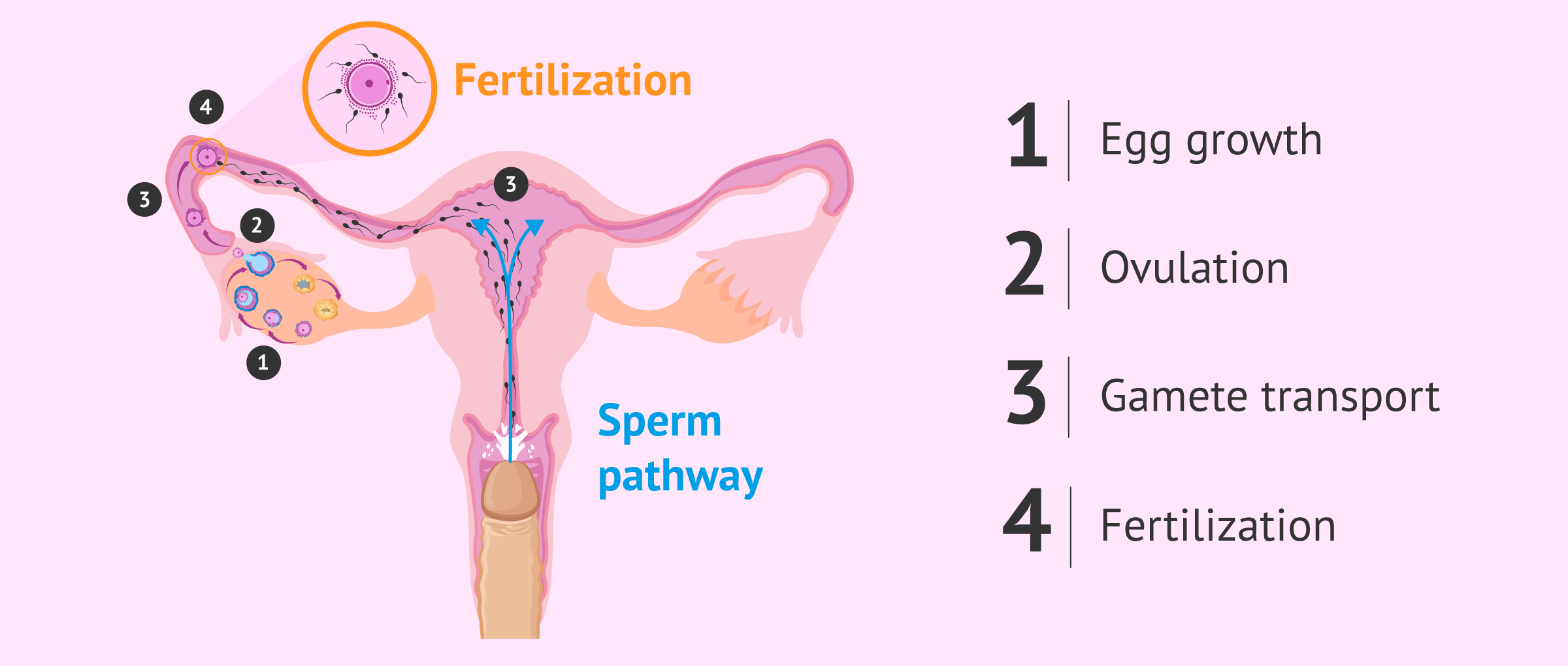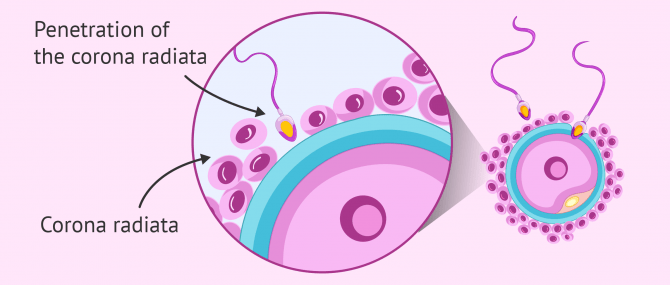Human fertilization is defined as the union between egg and sperm cells to cause a pregnancy. In humans, fertilization is an internal process, which is to say, it takes place inside the body of females, particularly in the Fallopian tubes, hence the more specific term natural or 'in vivo' fertilization.
The egg-sperm binding can be performed in the lab, too. This is possible thanks to the use of Assisted Reproductive Technology (ART), particularly the In Vitro Fertilization (IVF) technique.
Provided below is an index with the 8 points we are going to expand on in this article.
- 1.
- 2.
- 2.1.
- 2.2.
- 2.3.
- 2.4.
- 3.
- 4.
- 5.
- 5.1.
- 5.2.
- 5.3.
- 5.4.
- 5.5.
- 5.6.
- 5.7.
- 6.
- 7.
- 8.
Definition of fertilization
Fertilization is defined as the fusion between the male and female gametes, that is, sperm and egg, thereby reestablishing the normal number of chromosomes in humans (46 chromosomes).
For human fertilization to be possible, it is necessary that a man ejaculates inside the vagina of a woman. From that moment on, spermatozoa will start their journey inside the female reproductive tract until they reach the Fallopian tubes, where the egg cell is located.
Out of the millions of sperm released during ejaculation, just about two hundred are able to hit the egg cell in the Fallopian tube. In the end, just a single spermatozoon is able to interact with the egg, resulting in an embryo.
Once sperm reach the Fallopian tube after intercourse, they will be able to meet the egg provided that the woman is on her fertile days and ovulation has taken place. In that case, spermatozoa surround the egg cell in an attempt to fertilize it.
Stages of natural fertilization
As simple as the process whereby egg and sperm become one seems, actually it requires the activation of multiple mechanisms and changes in gamete cells for it to be possible.
The following are the four main stages of fertilization in human beings:
Penetration of the corona radiata
The first stage of human fertilization is the penetration of spermatozoa into the corona radiata of the egg, a coat made of cells that surrounds the egg.
Sperm cells are able to go through this first barrier thanks to the release of the hyaluronidase enzyme, and the motion of their flagellum (the tail).
When they cross this layer, spermatozoa encounter a second barrier: the zona pellucida (ZP). It is an external layer that surrounds oocytes.
Penetration of the zona pellucida
More than a single sperm cell is required to degrade the ZP. Nonetheless, in the end just one of them will be the "winner", that is, the one who fertilizes the egg.
In order to be able to cross this second barrier, the head of the sperm establishes contact with receptor ZP3 of the ZP. This triggers the acrosome reaction, which involves the release of a series of hydrolytic enzymes (contents of the acrosome). These enzymes dissolve the ZP to allow

